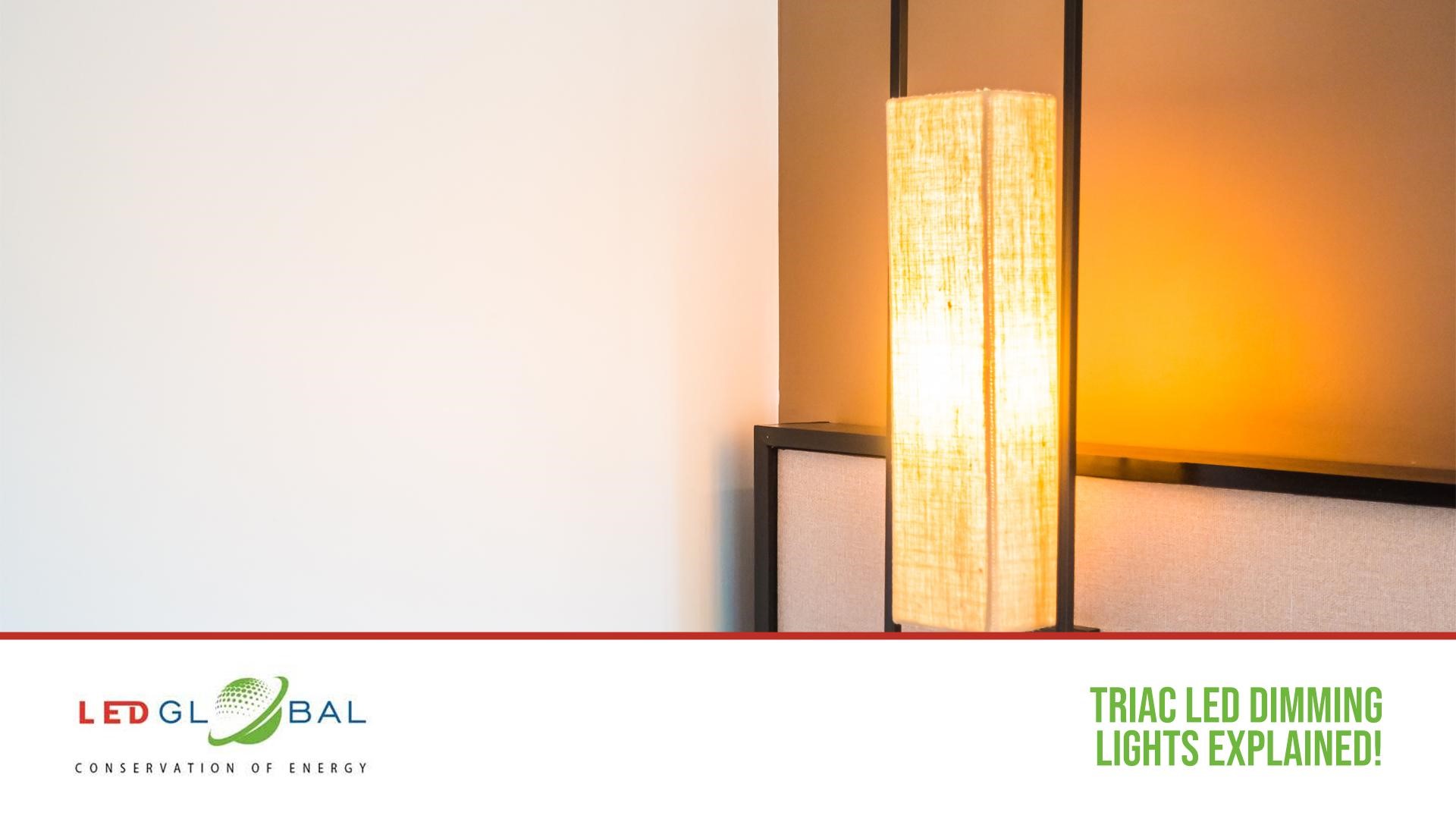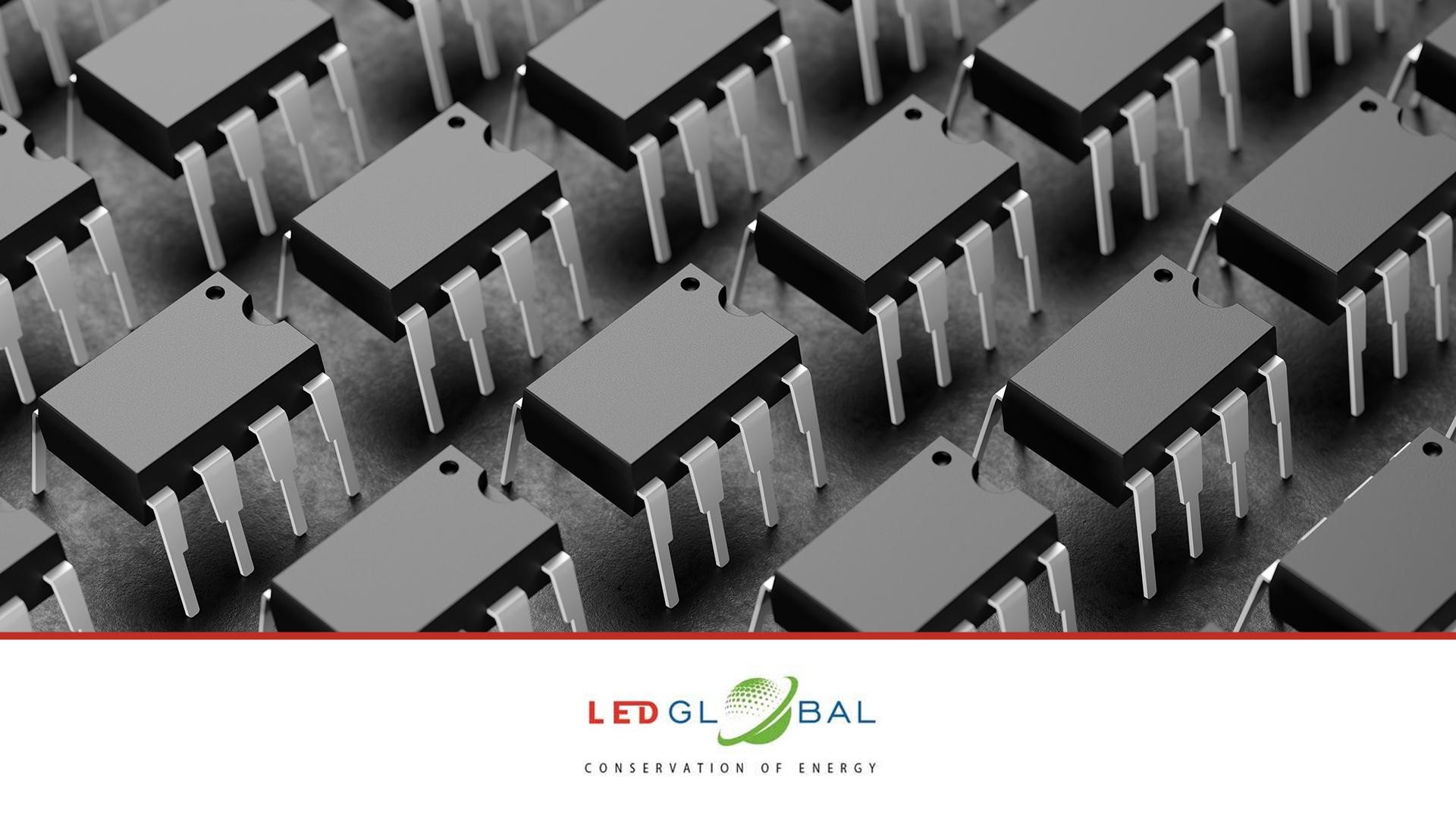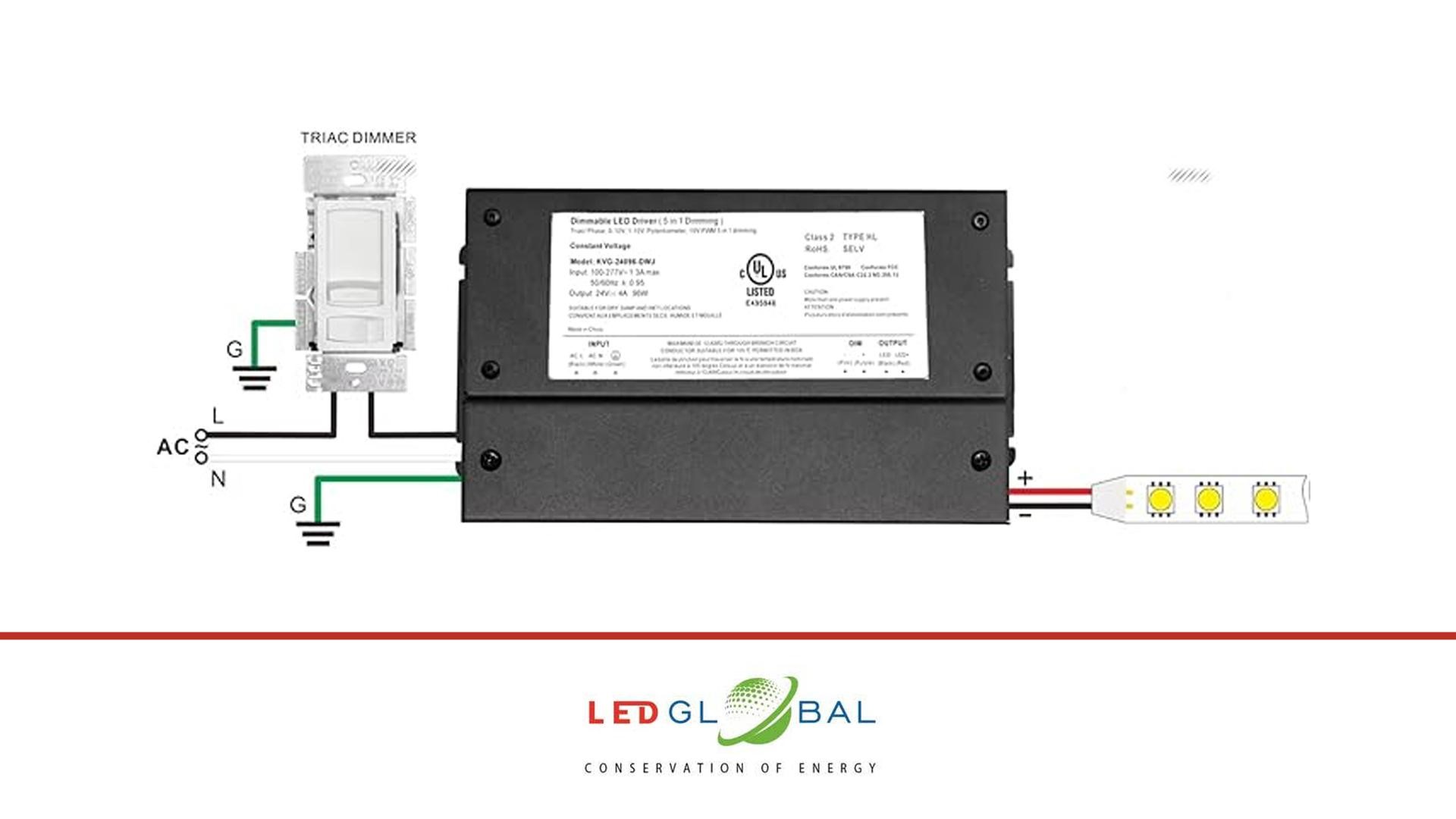Triac LED dimming is centred around manipulating alternating current (AC) voltage to control the brightness of LED light output. Unlike conventional incandescent bulbs, which can be dimmed by voltage lowering, LEDs necessitate more advanced control techniques due to their distinct electrical characteristics. Through Triac dimming, the LED is rapidly switched on and off at precise intervals during each cycle of the AC waveform, resulting in an altered perception of brightness.
What are Triac LED Dimming Lights?

Triac LED dimming is centered around the manipulation of alternating current (AC) voltage to control the brightness of LED light output. Unlike conventional incandescent bulbs, which can be dimmed by lowering the voltage, LEDs necessitate more advanced control techniques due to their distinct electrical characteristics. Through Triac dimming, the LED is rapidly switched on and off at precise intervals during each cycle of the AC waveform, resulting in an altered perception of brightness.
Importance and Applications
The significance of Triac LED dimming lights resides in their capacity to provide smooth dimming functionalities with minimal flickering and consistent performance throughout a broad spectrum of dimming levels. This degree of accuracy enables users to craft personalized lighting ambiences that cater to their requirements and preferences for creating a soothing atmosphere in residential areas, highlighting products in retail settings, or illuminating office workspaces.
Triac LED dimming lights have many uses in residential, commercial, and industrial settings. Within households, Triac dimming allows individuals to create a desired atmosphere in their living rooms, bedrooms, and dining rooms, ultimately improving the overall comfort and ambience.
Triac dimming is commonly utilized in commercial establishments like restaurants, hotels, and retail stores to accentuate products, establish focal points, and enhance the overall visual appeal of the area. Additionally, Triac LED dimming lights in industrial settings provide energy-efficient lighting options that help reduce costs and promote environmental sustainability.
Understanding TRIAC Dimming
TRIAC dimming is a commonly employed technique for regulating the intensity of LED lights, providing users with a seamless and efficient means to adjust illumination levels. To truly understand TRIAC dimming’s core, it is crucial to delve into its fundamental principles and compare it with alternative dimming technologies.

What does TRIAC Stand for?
TRIAC, short for Triode for Alternating Current, is a semiconductor component used in electronic circuits to control the flow of alternating current (AC). In dimming applications, TRIACs adjust the voltage provided to LED lights, enabling users to modify their brightness levels.
How does TRIAC Dimming Work?
The TRIAC dimming process involves swiftly toggling the LED on and off at precise moments throughout each cycle of the AC waveform. By adjusting the timing of these cycles, the LED’s average power consumption is modified, leading to alterations in brightness. This rapid toggling happens in an undetectable way to the human eye, guaranteeing a seamless and flicker-free dimming experience.
Difference between TRIAC Dimming and ELV Dimming?
TRIAC dimming and ELV dimming differ in compatibility with various lighting fixtures. TRIAC dimming is mainly suitable for LED lights and certain types of incandescent and halogen lamps.
On the other hand, ELV dimming is specifically designed for low-voltage lighting systems that are powered by electronic transformers. Although TRIAC dimming is more versatile and compatible with a wider range of lighting fixtures, ELV dimming offers advantages such as smoother performance and compatibility with specific lighting loads.
Exploring TRIAC Control Method
It is crucial to comprehend the importance of the TRIAC (Triode for Alternating Current) control method in contemporary lighting systems, especially when it comes to dimming LED lights. Familiarizing oneself with how this method operates and its advantages and constraints is key to fully appreciating its role in lighting control technology.
How does the Triac Control Method Function?
The fundamental principle of the TRIAC control method involves regulating the intensity of LED light output by modulating the flow of alternating current (AC). This modulation is achieved by utilising TRIACs, which function as bidirectional switches. By accurately managing the timing of these switches throughout each cycle of the AC waveform, the average power supplied to the LED is modified, thereby controlling its brightness.
Benefits and Limitations
The TRIAC control method offers several advantages, with one of the main benefits being its compatibility with current infrastructure, especially standard household dimmer switches. This compatibility makes it a convenient choice for upgrading older lighting systems with LED technology, as it eliminates the requirement for extensive rewiring or specialized control equipment. Moreover, TRIAC dimming provides a seamless and flicker-free performance, guaranteeing a pleasant lighting experience for users without any noticeable fluctuations.
Nevertheless, the TRIAC control method is not without its limitations. A significant disadvantage is its reliance on leading-edge dimmer switches, making it incompatible with all LED fixtures. Some LED lights necessitate trailing-edge dimmers to function at their best, creating compatibility issues with the TRIAC control method. Additionally, TRIAC dimming may face challenges with specific electronic transformers and drivers, restricting its suitability in certain lighting setups.
Triac Dimming vs. 0-10V Dimming
Within the realm of lighting control, Triac dimming and 0-10V dimming are two prominent solutions utilized for adjusting the brightness of LED lights. Despite serving a similar function, these methods vary greatly in terms of their technology, compatibility, and performance attributes.
What is 0-10V Dimming?
The control technique known as 0-10V dimming utilizes a low-voltage direct current (DC) signal to regulate the light output of LED fixtures. A seamless and gradual dimming effect can be achieved by adjusting the signal between 0 volts (minimum brightness) and 10 volts (maximum brightness). This method is highly favored due to its simplicity, compatibility with various LED fixtures, and ability to achieve precise and deep dimming levels. As a result, it is commonly employed in settings that demand meticulous lighting control, including theaters and art galleries.
Triac dimming, on the contrary, uses Triac semiconductor devices to control the flow of alternating current (AC) to adjust the brightness of LED lights. In contrast to 0-10V dimming, which necessitates specific control wires to transmit the dimming signal, Triac dimming utilizes the current power wiring, providing a practical solution for upgrading current lighting systems with LED technology. Triac dimming provides seamless dimming capabilities and works well with standard household dimmer switches, making it a suitable choice for both residential and commercial settings.
Key Differences between Triac Dimming and 0-10V Dimming
Triac dimming and 0-10V dimming differ in compatibility, control method, and performance characteristics. Triac dimming works with standard household dimmers and uses the current wiring setup, whereas 0-10V dimming needs specific control wires and drivers, potentially increasing the complexity and cost of installation. Moreover, 0-10V dimming provides smoother dimming and deeper dimming levels than Triac dimming, making it more suitable for applications that demand accurate lighting control.
Advantages and Disadvantages of Each Method
Triac dimming provides the advantage of easy installation and compatibility with existing infrastructure. However, it may not offer the same level of dimming precision as 0-10V dimming. On the other hand, 0-10V dimming offers smoother dimming performance and deeper dimming levels. However, it may require additional wiring and components, which can increase the complexity and cost of installation.
Compatibility and Considerations
Various factors must be carefully considered when implementing Triac LED dimming lights to guarantee efficient performance and seamless compatibility with the current infrastructure. A thorough understanding of these factors is key to effectively integrating Triac dimming technology into lighting systems.
Factors to Consider when using Triac LED Dimming Lights
When utilizing Triac LED dimming lights, it is crucial to consider the compatibility with various fixtures and dimmer switches. Although Triac dimming is typically compatible with a broad selection of LED fixtures, it is important to confirm compatibility with specific models to prevent potential problems like flickering, buzzing, or limited dimming range. To achieve optimal dimming performance, certain LED fixtures may necessitate dimmable drivers or compatible dimmer switches.
Compatibility with Different Fixtures and Dimmer Switches
Furthermore, it is crucial to consider the compatibility with dimmer switches when incorporating Triac LED dimming. Triac dimming works well with leading-edge dimmer switches typically used in residential and commercial settings. Nevertheless, it is important to note that not all dimmer switches are the same, and compatibility may differ based on factors like load capacity, minimum load requirements, and dimming range. Therefore, it is imperative to choose dimmer switches that are made specifically for LED dimming and can handle the total load of LED fixtures to guarantee a seamless and dependable dimming operation.
Additionally, it is important to evaluate the wiring infrastructure and electrical compatibility when incorporating Triac LED dimming lights into current lighting systems. Triac dimming uses the existing power wiring for dimming control, which usually eliminates the necessity for extra control wires or modifications to the infrastructure. Nevertheless, verifying that the electrical system can handle the dimming load and that the wiring is correctly set up to accommodate dimming control signals is vital.
Installation and Setup Guide
Proper installation of Triac LED dimming lights is crucial for their efficient operation and performance. Specific guidelines and close attention to detail are important. Below are some recommendations for installing Triac LED dimming lights and ways to address common troubleshooting problems.
1. Choose Compatible Fixtures: Make sure that the LED fixtures you are about to install are suitable for Triac dimming technology. Before installation, it is essential to review the manufacturer’s specifications and compatibility lists to confirm their compatibility.
2. Select the Right Dimmer Switch: Utilize advanced dimmer switches specially crafted for Triac dimming. Verify that the dimmer switch can handle the total load of LED fixtures to prevent compatibility issues and guarantee optimal dimming functionality.
3. Proper Wiring: When connecting the LED fixtures and dimmer switch, adhere to the manufacturer’s guidelines. Ensure all links are firmly established and insulated to avoid electrical risks or malfunctions.
4. Test Dimming Range: Once the installation is complete, verifying the dimming range of the LED fixtures is important. This verification ensures that the dimming process occurs seamlessly, transitioning from full brightness to the desired lowest level without flickering or buzzing. If any issues are detected, it is recommended that the dimmer settings be adjusted accordingly to achieve the best possible dimming performance.
5. Troubleshooting Common Issues: Troubleshooting problems commonly encountered with Triac LED dimming lights may involve flickering, buzzing, or inconsistent dimming performance. Below are a few possible remedies to consider:
– Flickering: Flickering may arise due to incompatible dimmer switches, inadequate load on the dimmer switch, or faulty connections. It is essential to verify the dimmer switch’s compatibility with Triac dimming and ensure that the total load of LED fixtures meets the minimum load requirements specified by the dimmer switch. Thoroughly inspect all connections and securely tighten any loose wires to eliminate flickering effectively.
– Buzzing: If the dimmer switch is not grounded correctly or is overloaded, buzzing sounds may occur. It is important to follow the manufacturer’s guidelines and ensure that the dimmer switch is securely grounded. If the buzzing continues, it may be necessary to replace it with a model that has a higher rating.
– Inconsistent Dimming: Inconsistent dimming capabilities may stem from LED fixtures that are not compatible, insufficient load on the dimmer switch, or wiring problems. It is important to confirm that the LED fixtures are compatible with the dimmer switch, ensure that the total load meets the dimmer switch’s specifications, and inspect all wiring connections for correct installation.
Best Practices for Optimizing Triac LED Dimming
To maximize dimming efficiency and extend the longevity of Triac LED dimming lights, it is crucial to adhere to recommended practices and maintenance and care instructions. Here are a few suggestions to keep in mind:
Tips for Achieving Optimal Dimming Performance
1. Choose Quality LED Fixtures: Choose premium LED fixtures from well-known manufacturers tailored to Triac dimming technology. Fixtures of superior quality offer strong dimming capabilities and ensure reliable performance in the long run.
2. Use Compatible Dimmer Switches: It is important to verify that the dimmer switches utilized are suitable for Triac dimming and have the appropriate rating for the total load of LED fixtures. Failure to use compatible or properly sized dimmer switches may lead to issues such as flickering, buzzing, or irregular dimming functionality.
3. Install Properly: Please adhere to the manufacturer’s instructions for wiring and installing LED fixtures and dimmer switches. It is crucial to ensure that all connections are securely made and properly insulated to avoid potential electrical hazards or malfunctions.
4. Test Dimming Range: Following installation, evaluate the dimming capacity of LED fixtures to guarantee a seamless transition from maximum brightness to the desired minimum level without flickering or buzzing. Make necessary adjustments to the dimmer settings to achieve the best dimming results.
5. Regular Maintenance: Regularly inspect LED fixtures and dimmer switches for indications of wear, harm, or loose connections. If necessary, clean the fixtures and switches to eliminate dust and debris that could impact their functionality. Take immediate action to resolve any problems to prevent additional damage or deterioration.
6. Monitor Performance: It is important to monitor the performance of Triac LED dimming lights over time, particularly in areas with high foot traffic or where frequent dimming adjustments are made. Regularly check for any changes in dimming performance, such as flickering or buzzing, and promptly address any issues to maintain optimal performance.
7. Consider Professional Assistance: If you come across persistent problems or have doubts regarding the correct installation or troubleshooting procedures, it is advisable to seek help from a certified electrician or lighting specialist. They possess the expertise to offer valuable guidance and support, guaranteeing the optimal functioning of Triac LED dimming lights.
Conclusion
Triac LED dimming lights provide revolutionary control over the illumination levels, essential for residential and commercial environments. Comprehending their functionality, compatibility, and installation is imperative to achieve optimal performance. Triac dimming enables smooth dimming capabilities by ensuring a correct setup and regular maintenance, thereby enhancing lighting environments with utmost efficiency and accuracy.






